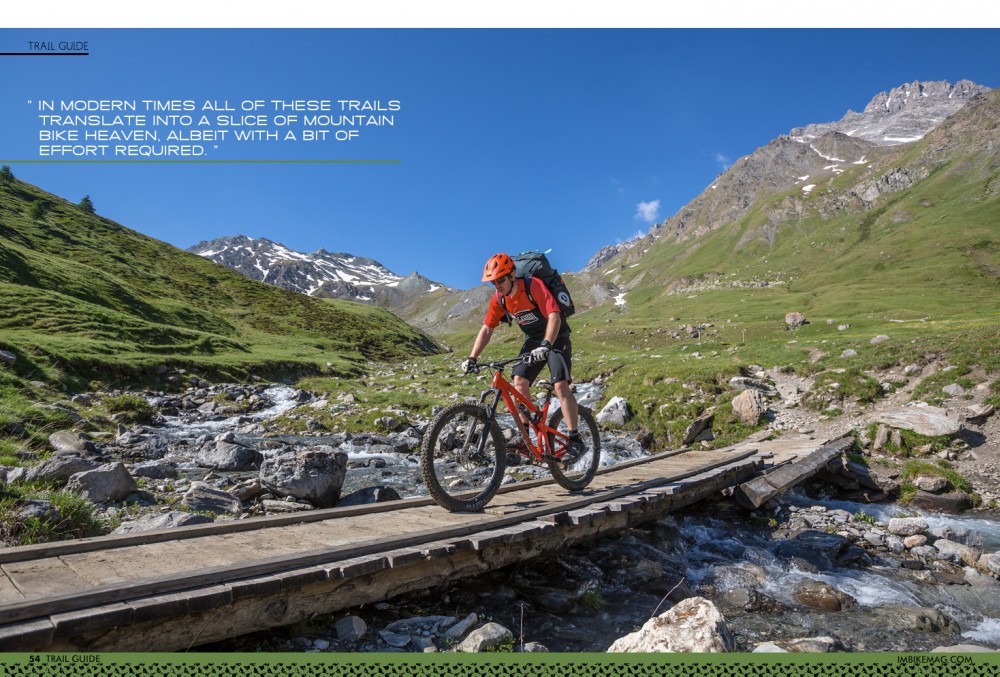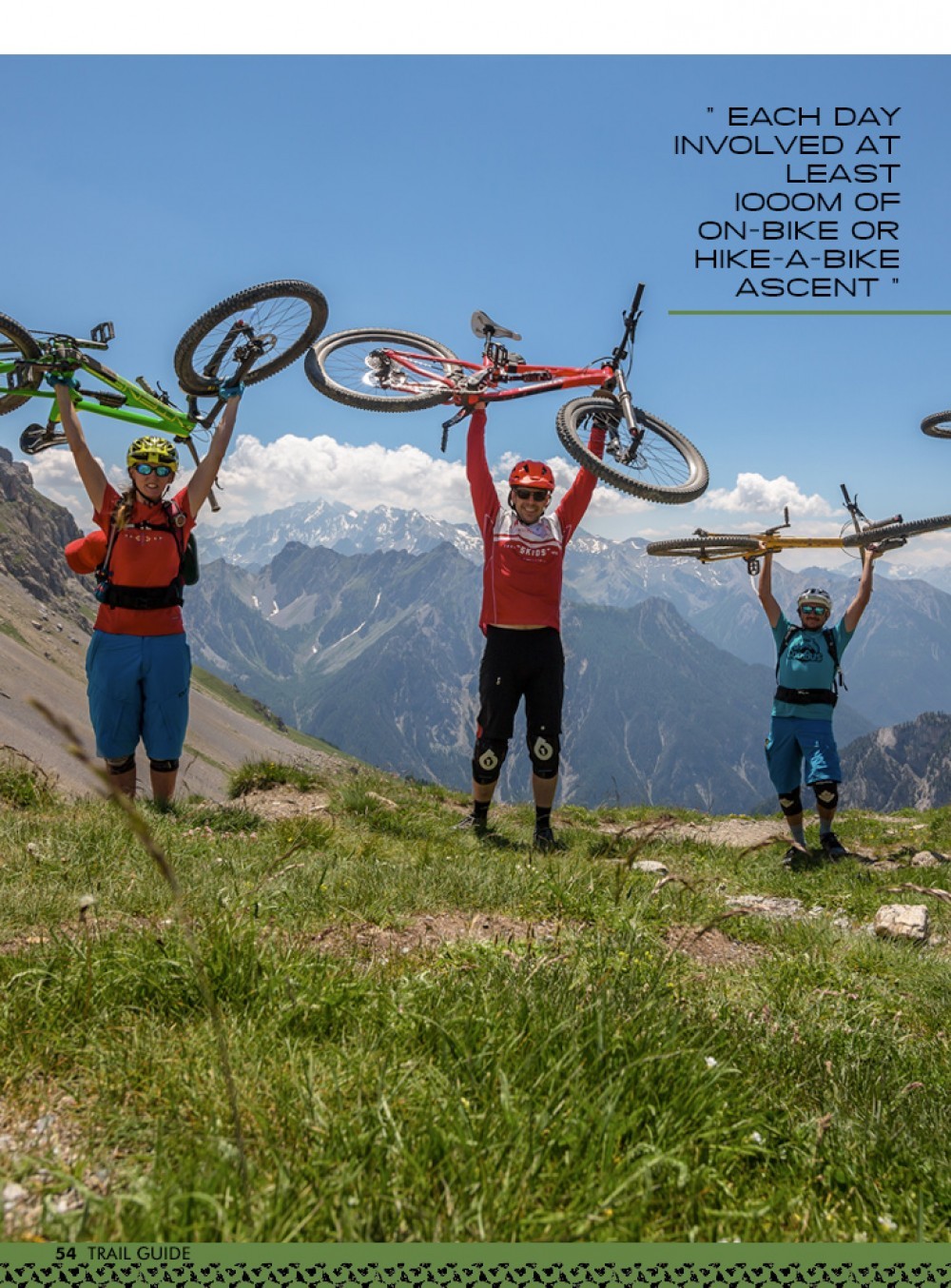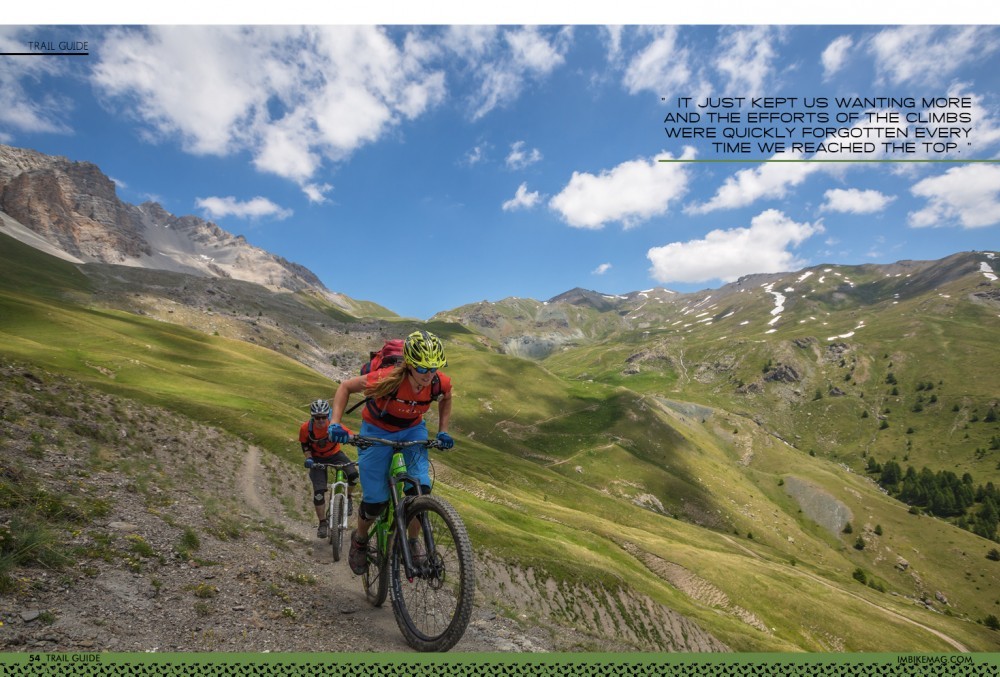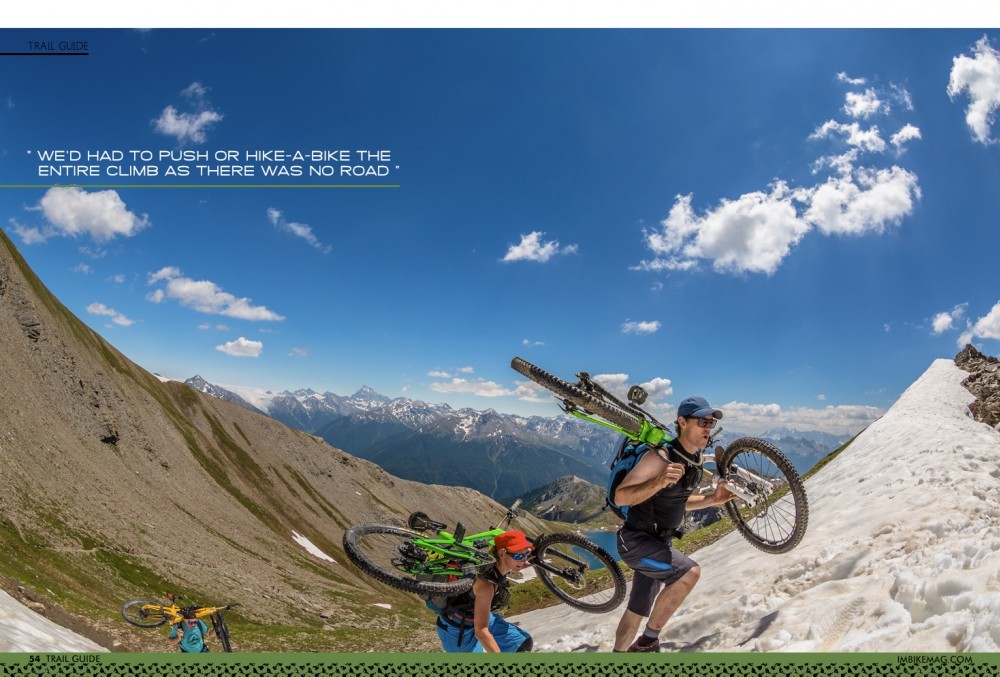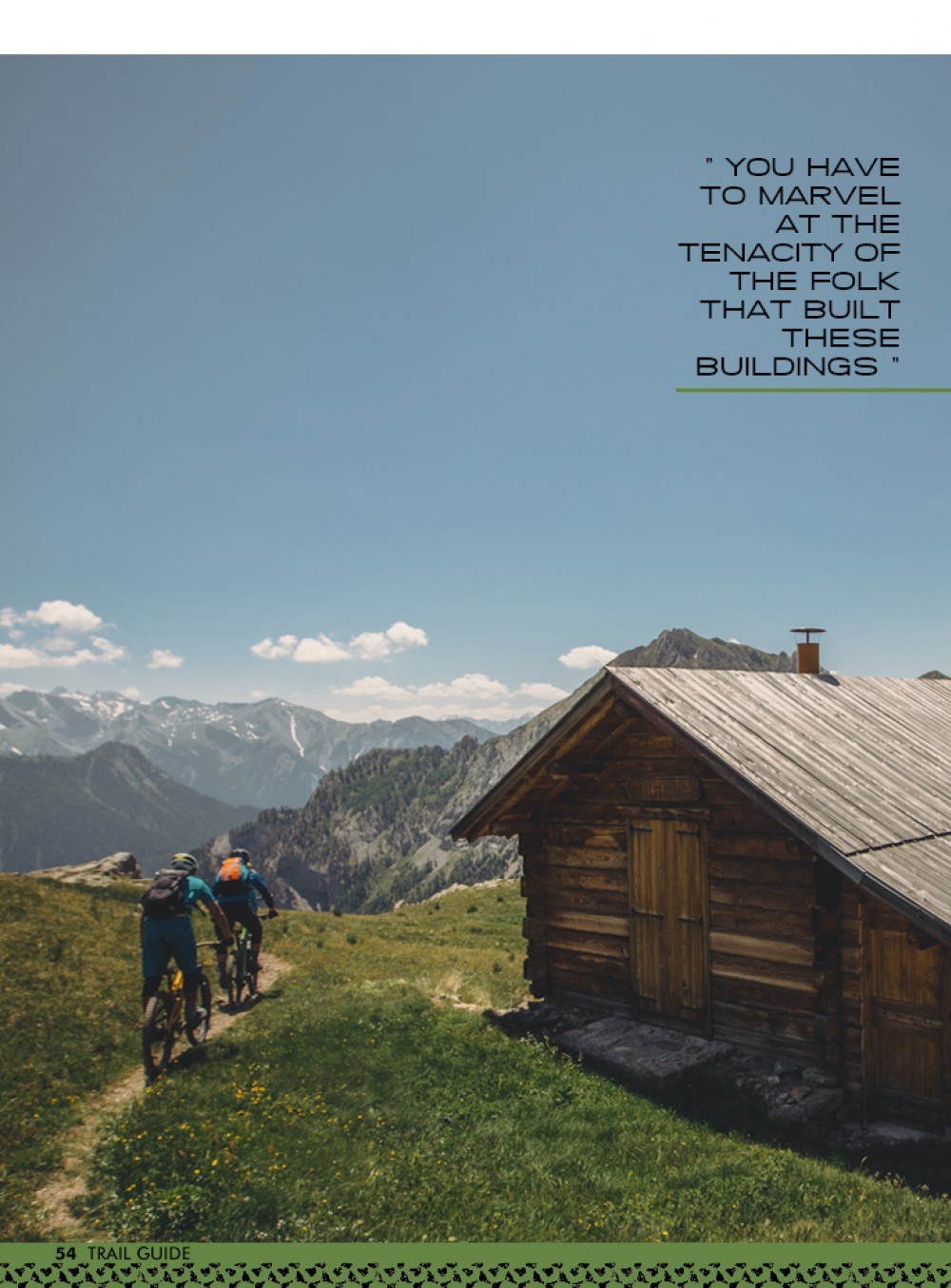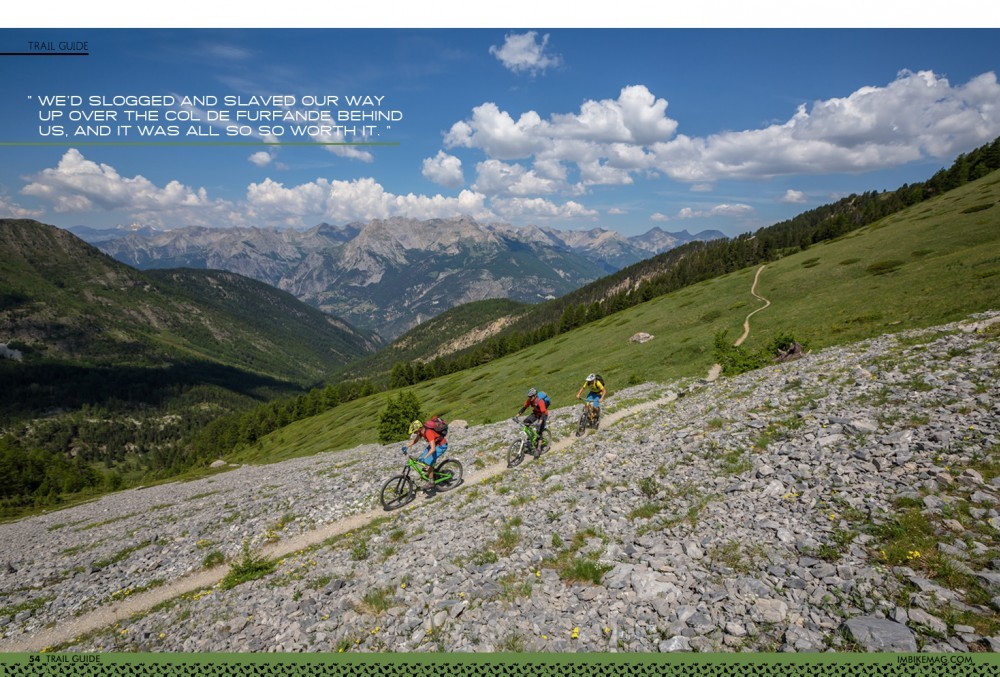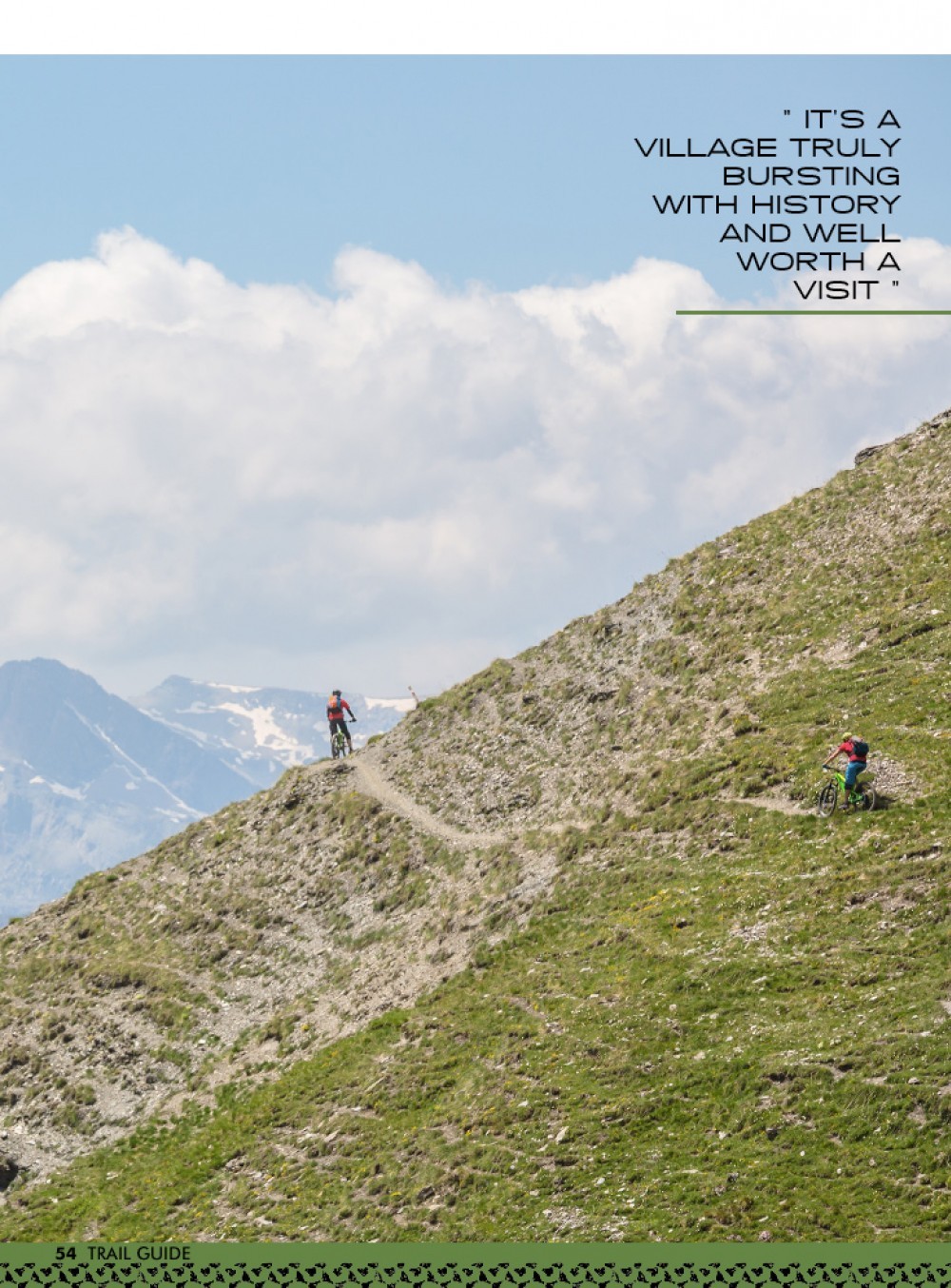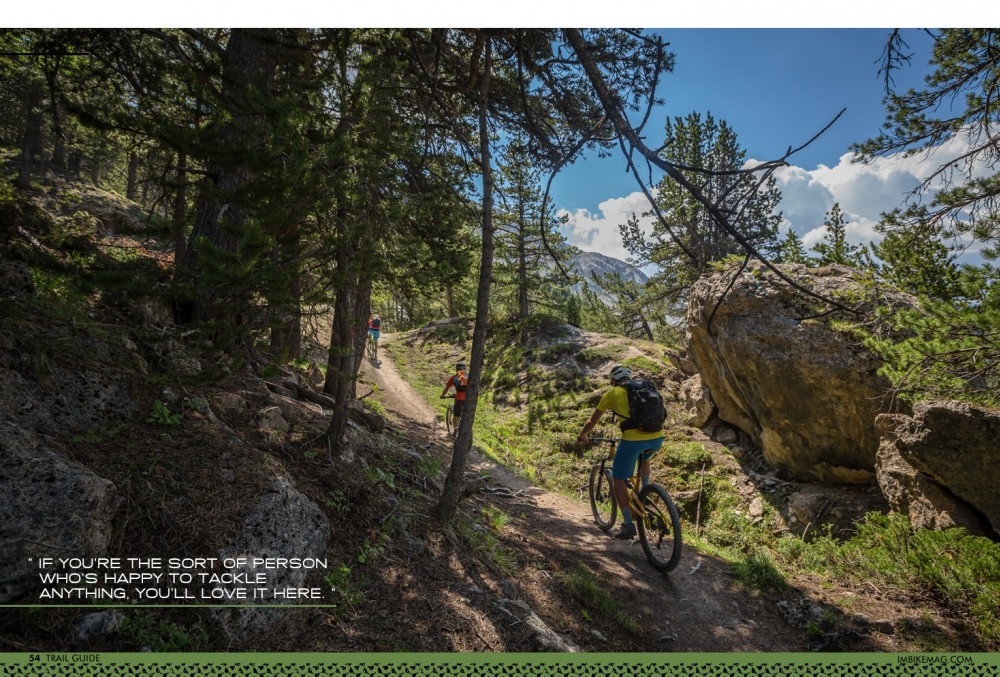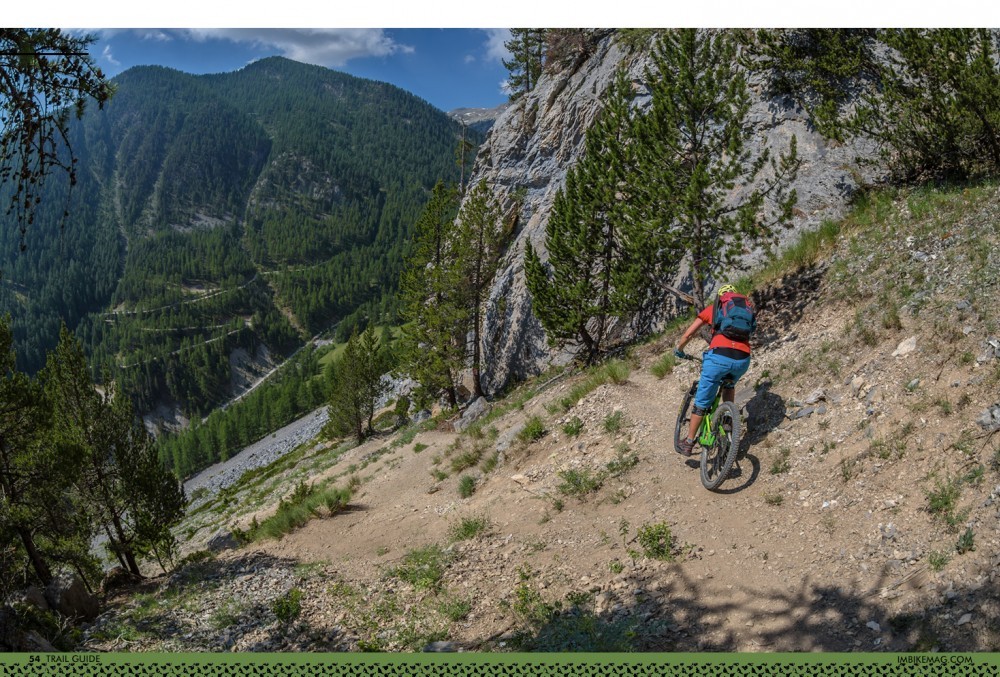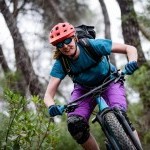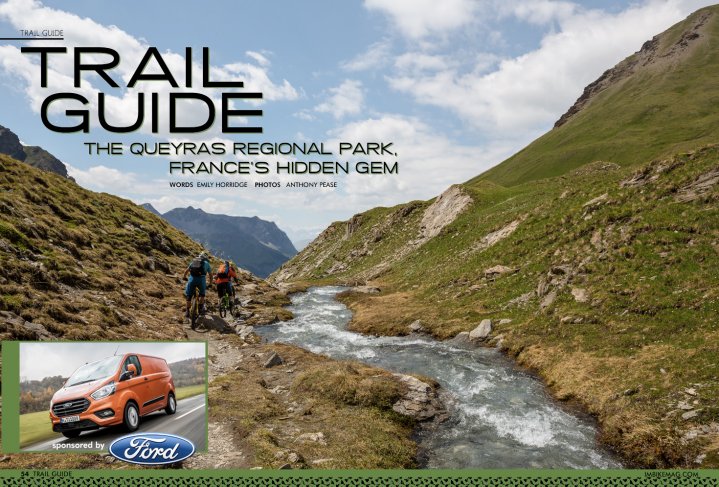
Trail Guide - Queyras, France
Issue 54 / Wed 27th Jun, 2018
Emily Horridge takes us on a journey into the often unexplored Queyras region of the French Alps and gets genuinely off the beaten track as they track down the best singletrack in the region.
“The where?” I hear you ask, and I’m not surprised. So unknown is this fantastic area of the French Alps that even many of the French aren’t sure where it is. Admittedly, it’s not that easy to describe. Take your map, find Grenoble, and draw a line heading out South East until you hit the French-Italian border. Hopefully, you can now see “Parc Naturel Régional du Queyras” on your map, and there it is nestling just inside the border, bounded by the Col d’Izoard to the north and Col Agnel to the east.
Part of the Hautes-Alpes region of France, the Queyras is rich in history, clearly evident from the ancient buildings and churches found throughout the area, especially in St Veran. During the 14th century, there were already around 5,000 inhabitants in the area, which undoubtedly led to the number of trails created and then used to drive animals from one area to another and to enable folk to travel between villages. In modern times all of these trails translate into a slice of mountain bike heaven, albeit with a bit of effort required.
Out of eight main villages, five have some form of ski lift, but few of these run during the summer. There is a small bike park in Abriès (four lift-accessed trails, €12.50 per day), but it’s true to say that the real attraction of this area lies in the natural trails found elsewhere on the mountain.
Not surprisingly, unless you are very good with a map and want to spend many hours researching where to ride, the Queyras is the sort of place where you’re going to need a guide. Hiring a guide often comes with the added bonus of an uplift vehicle, also very handy in this area due to the lack of uplift infrastructure.
The best time to visit the Queyras is undoubtedly September and early October when the autumn colours are simply stunning and the summer hikers have returned home. This is actually true for most of the Alps, including the higher areas such as Les Arcs or Morzine. June also works but you may still find some snow lying around on the high mountain passes as we discovered when we visited the Queyras with The Inside Line MTB last June.
We chose to do a 5-day point-to-point trip as a way of getting a great feel for the whole area. We rode from village to village via high mountain passes each day and stayed in a different gite d’étape each night. For around €45 per person per night, you get dormitory style accommodation (although in some places you can request a private room for you and your friends), a three-course meal from the set menu, and breakfast the following morning. For around another €5 you can request a sandwich to take for lunch.
Our guide had carefully planned the route to maintain a good balance between a holiday feel with plenty of time to kick back and enjoy a few beers post-ride, but also to get enough done that we felt like we’d earned those drinks. We’d opted to take on the challenge of doing the trip without any uplifts, so each day involved at least 1000m of on-bike or hike-a-bike ascent, but we found that this was just the right amount to leave us with enough energy to attack the long descents, as well as enjoying the beautiful surroundings we were passing through.
Reaching the highest point of each day, we quickly noticed how easily we could see where we’d ridden the day before. The Queyras is so compact that it feels like you can see all of the mountains within the regional park at any time. On an itinerant tour like ours, it was really great to be able to see not only where we’d come from, or where we were the day before, but also where we’d be the next day. Enticing looking trails weaving their way down the sides of incredible looking valleys - it just kept us wanting more and the efforts of the climbs were quickly forgotten every time we reached the top. If you enjoy planning and executing your own adventures, then you can do no worse than to focus on the GR58 hiking trail, also known as the Tour du Queyras, and work out a route based on that with one or two variations thrown in wherever you see fit.
If instead, you choose to base yourself in one place for a few days then it’s never too far to drive somewhere new to explore a different set of trails on a different mountain. There is no real need to move from one place to another each night, it simply added to the feeling of adventure for our trip. We’d probably recommend Ville-Vieille as there’s an Intermarché supermarket not far away, and a very well stocked bakers in the village. Chateau-Queyras seemed to be the exception to the usual bakery rule – amazingly there wasn’t one there – or not that we could find anyway.
You’d think that with the proximity of all these mountains that all the trails would feel the same, but amazingly they don’t. Day one's descent was full of baby head sized rocks, which could definitely be described as tech-flow and got better and better the further down we got. At one point we were riding alongside a fast-flowing stream full to the brim with meltwater from the snow above. Falling in wasn’t an option, full-on trail focus was required!
In contrast day two’s descent was much smoother, very fast and very flowy. We’d had to push or hike-a-bike the entire climb as there was no road, but it seemed to go very quickly – definitely helped by the sheer beauty of the valley we were headed up. Reaching the top, the descent down the other side was a lot less steep than the previous day but that meant you could just leave the brakes alone and let rip. Imagine a beautiful green alpine pasture and a trail stretching endlessly before you. Alpine mountain biking perfection? We thought so. We finished up in Arvieux, where you’ll find a small village shop and a bar. This pretty much set the theme for the week – all of the villages are very small – most have a village shop, but beware – it will be closed over lunch (usually 12-2pm, or 12-3pm).
Days three and four both started with long fire-road climbs, which of course we could have uplifted if we’d not already decided to dispense with such luxuries. It has to be said though that the descents tasted that bit sweeter for all the effort we’d put in and all the sweat we’d wiped from our brows. Pausing for a break at the top of each climb was a time to mentally regroup, relax for a moment, and take in all that lay before us – over every mountain pass, there was a different vista, different backgrounds, and layer upon layer of distant snow-capped peaks. Lying down in the cool alpine grass taking in a few snacks, a drink and the silence of the mountains was the perfect way to prepare for each long descent that lay ahead. In contrast, if you’re using an uplift service then you can easily fill your day with two or even three big descents, depending on how close the van can get to the top of the climb (and therefore how much on-bike ascent there is left to do).
Once again the trails were different from what we’d ridden previously. Day three saw us riding a much more hard-packed, well-trodden path to start with, weaving its way between a tiny hamlet of wooden cottages situated in the most unlikely of places. You have to marvel at the tenacity of the folk that built these buildings so very long ago, and again at that of the modern-day owners who continue to keep them in a habitable state – miles from anywhere with no real vehicular access.
We’d been advised by our guide that we’d be passing the Refuge de Furfande around lunchtime, so decided that we’d treat ourselves to a sit-down lunch, rather than the picnics we’d carried with us each day previously. What an incredible place for it. It felt like we’d stumbled into alpine paradise – the greenest of grass, a gently warming wind, and of course a stunning mountain view. We’d slogged and slaved our way up over the Col de Furfande behind us, and it was all so so worth it. Our simple lunch – such as they are in these remote mountain huts – was delicious, and it was extremely difficult to stir ourselves from our reverie.
Our stop-over between days three and four was in the gite d’étape Gite Les Astragales, in Ville-Vieille. No sooner had we settled in than post-ride beers were in our hands. From the very first night, we’d discovered a local beer “La Tourmente”, very refreshing after a big day in the mountains! It’s definitely worth a try in all its varieties – you’ll find it all over the region.
Day four saw us passing through yet more amazing scenery via the Col de Fromage, and finishing up in a village called St Veran. Even if you don’t end up riding there, you need to visit this place. It’s the highest commune in France (a commune is a little like an English parish) at 2000m and every building there is seriously old. We stayed in gite d’étape Les Gabelous, and despite some modernisation (such as extra toilets and showers), it has retained its old world charm and was an experience in itself. After a delicious three-course dinner we went to explore around the village outside.
Many of the buildings in St Veran were constructed using logs atop lower walls made of stone. Some of these buildings were clearly hundreds of years old, their preservation aided by the 16th-century inhabitants having realised that they needed to leave sufficient space between the houses to stop outbreaks of fire from spreading (in contrast to the tightly clustered buildings in most settlements of that era). It’s a village truly bursting with history and well worth a visit for that alone.
Our final day’s ride took us from St Veran almost immediately into another push/hike-a-bike ascent. Climbing gently through the lush green pasture, we eventually reached our first pass of the day. The trail descending off the other side was like nothing else we’d ridden so far: it was entirely rock. Imagine scree on steroids, and you’ve got it about right. Not exactly baby heads, because they weren’t round rocks, and the trail was nestling nicely along the hillside, almost as if flattened down by someone with a very powerful whacker plate, but definitely very rocky, and very different to anything else encountered so far. We stopped off in the Refuge d’Agnel for an excellent coffee – no doubt enhanced by being mere metres from the Italian border.
Our final trail of the trip was by far and away the best of the week. That’s impressive bearing in mind how good every trail up until this point had been. But at least forty minutes of everything you could think of in one trail wrapped our week up perfectly. Starting at Col Vieux and finishing in La Chalp, it’s an eight-kilometre hoon down one hell of a fast and fun trail. If you ride only one trail in the Queyras Regional Park, you have to make it this one.
If you’re looking for a new destination away from the well-worn trails of the most popular biking resorts in the Alps, then it is without a doubt worth a visit to the Queyras. The trails are amazing. So varied, so much fun, and so long. Most trails have only short sections of a technically difficult nature, so if you’re the sort of person who’s happy to tackle anything, you’ll love it here.
We rode from Abriès, through Les Fonts de Cervieres, Arvieux, Chateau-Queyras, Ville-Vieille, St Veran, La Chalp, Ristolas and back to Abriès. There’s also Aiguilles which has a reasonable village shop, and a hotel. Almost all of the villages have a gite d’étape in them too.
The nearest airport is Turin, approximately 2.5h away. You could also fly to Lyon or Geneva which are both around 4h drive away.
MTB holiday packages: http://www.theinsidelinemtb.com/holidays/queyrasmtbholiday/
Tourist Information & Accommodation info: https://en.queyras-montagne.com/summer
Gites d’étape: http://www.montourduqueyras.fr/fr/index.aspx
Bike park Abriès: http://www.enduro-bike-park-queyras.com
Tour du Queyras: http://www.tour-du-queyras.com
The local beer: http://www.biereslatourmente.fr
By Emily Horridge
Emily has been riding bikes since forever. She used to race on the World Cup DH circuit and in recent years has moved towards enduro racing. She knows her way around bikes and spends her life in Bourg Saint Maurice, France where she runs The Inside Line MTB. Offering unforgettable mountain bike trips on some of the best trails in the French Alps. A writer, tester and guide, but above all a biker; we're stoked whenever Emily sends us over some content as it is always world class!



